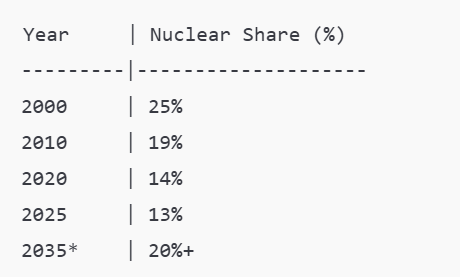On July 22, 2025, the UK government officially approved the Final Investment Decision (FID) for the £38 billion Sizewell C nuclear power project — one of the most significant infrastructure undertakings in the country in recent decades. Once completed, the twin-reactor plant will supply clean electricity to 6 million homes, contribute up to 7% of the UK’s total electricity demand, and create over 10,000 high-skilled jobs at peak construction.
Far more than a power plant, Sizewell C represents a convergence of national energy sovereignty, green industrial policy, and long-term infrastructure investment.
A New Model: State-Backed Capital Meets Regulated Markets
Sizewell C marks the first time the UK government has taken an equity stake of this size in a major energy infrastructure project, and it introduces a new financing mechanism: the Regulated Asset Base (RAB) model. This structure allows investors to begin receiving regulated returns during construction — a major shift from the traditional model of post-completion cost recovery.
| Stakeholder | Ownership |
|---|---|
| UK Government | 44.9% |
| La Caisse (Canada Pension Fund) | 20.0% |
| EDF (France) | 12.5% |
| Centrica (UK) | 15.0% |
| Amber Infrastructure | 7.6% |
The RAB model is projected to save up to £3 billion in financing costs compared to conventional models and is designed to attract long-term institutional capital while reducing upfront public spending.
Economic Multiplier Beyond Energy
The economic impact of Sizewell C extends far beyond electricity generation:
Over 70% of spending will flow into UK-based supply chains
1,500 apprenticeships will be created
Over 6,000 nuclear professionals will be trained
60+ UK companies will join the global nuclear supply ecosystem
The project is also being positioned as a nuclear workforce incubator, supporting the UK’s future deployment of Small Modular Reactors (SMRs) and potentially advanced reactor technologies.
Nuclear’s Role in the Net-Zero Mix
Sizewell C is expected to significantly restore nuclear’s share in the UK energy mix, which has steadily declined over the past two decades.

*Forecast including Sizewell C and upcoming SMRs
Source: BEIS, National Grid ESO
In an era of rising renewable penetration, nuclear offers dispatchable, low-carbon baseload power, critical for grid stability and achieving net-zero by 2050.
A Replicable Engineering Platform
Sizewell C will replicate the EPR (European Pressurised Reactor) technology used at Hinkley Point C. This standardization enables:
Design continuity, reducing regulatory and engineering risk
Workforce retention, lowering mobilization costs
Supply chain reuse, unlocking manufacturing scale (e.g. reactor vessels, steam generators)
Government officials have emphasized that Sizewell C will serve as a blueprint for accelerated SMR deployment, moving clean energy infrastructure from bespoke projects to repeatable industrial systems.
Sizewell C is more than a power station. It’s a statement of intent — signaling that the UK sees nuclear not as a “complement” to renewables, but as a pillar of national energy policy and green industrial strategy.
By combining state participation, institutional capital, and replicable design, the project lays the foundation for a nuclear renaissance aligned with jobs, skills, and long-term decarbonization.
Over the next decade, the success of Sizewell C will shape how the UK — and potentially Europe — approaches large-scale energy infrastructure: not as isolated megaprojects, but as components of a cohesive, sovereign clean energy ecosystem.